

Village Profile on
Langtor Village under Mairang C&RD Block
District: West Khasi Hills
9st November, 2021.
COMMUNITY LED LANDSCAPE MANAGEMENT PROJECT
(CLLMP)


The Government of Meghalaya with financial help from the World Bank is implementing the Meghalaya Community Led Landscape Management Project (MCLLMP). The project will cover the entire state of Meghalaya and implementation of community led plans will be rolled out in phase manner throughout the state. The Meghalaya Basin Management Agency (MBMA) will facilitate community-led planning by providing support, technical inputs, and funding.
Theprojectisintendedtostrengthencommunity-lednaturalresourcesmanagementin selected landscapes within the 11 districts of the state. This would be achieved through a variety of planning, capacity building, and on-the-ground interventions to promote the conservation, sustainable use of natural resources, social inclusion, and community mobilisation; building traditional knowledge and learning, mapping of natural resources management; strengthening the community institutions and creating linkage with financial institutions and community organizations.
The project interventions will include preparation of community led natural resource management plans. The CLLMP has the following three components:
Strengthening Knowledge and Capacity of Communities for Natural Resources Management
Community-Led Landscape Planning and Implementation
Project Management and Governance
Objective:
The project objective is “to manage and conserve the natural resources, especially forests, soil and water sources, in a manner that supports the financial and physical well-being of communities in the State.”
The CLLM-Programme focuses on increasing the capacities of communities and traditional institutions (TI) by adopting a landscape approach to manage their natural resources such as soil, springs and other water sources, forests and bio-diversity, etc.
The project will be planned and implemented in about 400 villages across the state.
CLLMP has a strong focus on institution-building at the village-level, by ensuring systematic capacity-building on technical and social skill-sets.
The project will also extend such training to communities beyond the targeted villages and support efforts made by them to access funding from various rural and natural resources initiatives and schemes.
The programme will also invest in improving the process and outcome delivery, by developing and adhering to effective systems and procedures, supported by the appropriate technology.
Benefits for community (Skills and Capacity relating to technical and managerial areas like NRM and Conflict resolution
Benefits to traditional institutions (village councils, traditional leaders, community-based organizations, SHGs etc) through Knowledge sharing, promotion of innovative approach, access to technology, technical managerial and financial support.
It is estimated that the project will impact around 1 lakh partners (of which 50% are women) who depend on land, forest, agro-forestry.
Through the project, 55000 Ha of targeted area will be ensured with availability of water, biological resources, and soil productivity, which will in turn benefit around 400 villages and the outcomes delivery can be summarized as follows.
The Project will be executed by the MBMA in collaboration with other partners particularly, SIRD (for training and capacity building), Department of Soil and Water Conservation, Water Resource Department, Forest Department, specifically with respect to technical inputs, safeguards management and Community NRM plan preparation.
2018-2023 (5 years)
| Sl. No. | Topics | Page No. |
|---|---|---|
| I. | Introduction & History | 5 |
| II. | Social Profile | 6 |
|
7-9 | |
| III. | CLLMP Activities | 10 |
|
10-31 |
Langtor Village is situated in Eastern West Khasi Hills District under Mairang C&RD Block at 67Kms from Nongstoin, West Khasi Hills District and 10Kms away from District Headquarter, Mairang. As per Census 2021, Langtor population is 687 with a total household of 142.

In the 1800s, Langtor Village was formed after carving out from Nongbah Bynther. The name Langtor was given to it because of the presence of Sohphlang-like root called Langtor in the region. Therefore, the name Langtor Village was given and the river which they used to wash this root langtor is called river or Wah Langtor.

Langtor Village is bounded by Dombahkseh from the East and Tiehbah Village from the West.
The predominant population of Langtor Village are the Khasi people with the Lyngkhoi, Lyngdoh Kynshi, Nongsiej and Nongbah are the inhabitants of Langtor Village. The inhabitants follow indigenous faith for their religious beliefs or as it is known as Niam Tynrai in Khasi society.
Agriculture and animal husbandry are the main occupation. Khasi rice (Khaw Khasi), potatoes, maize are the main crops cultivated in the village. It encompasses a variety of dense forest. It comprises of plant species which include Pinus Keseiya (Diengkseh) and Myrica esculenta (sohphie)
Horse carriage were the main mode of transportation during the 1800s.
Langtor Village:
It has a total number of 142 households with a population of 687 people. Agriculture and its allied activities are the main occupation. Others are also enrolled in government and teaching jobs and few inhabitants are engaged in local businesses.
Village Accessibility
Langtor village is situated in Eastern West Khasi Hills District. In order to reach Langtor, one must venture through the highway. After reaching Bynther, take a right turn to reach the village which is not very far from the highway.
1. Population
At Langtor village, population of children with age 0-4 is 75, children with age 5-14 is 168, adult with age15-30 is 233, 30-60 is 173 and above 60 is 38.
| Age Group | Male | Female | Total |
|---|---|---|---|
| 0-4 | 44 | 31 | 75 |
| 5-14 | 87 | 81 | 168 |
| 15-30 | 124 | 109 | 233 |
| 30-60 | 81 | 92 | 173 |
| Above 60 | 18 | 20 | 38 |
2.Fuel Type:
| Fuel Type | Total HH |
|---|---|
| Charcoal | 0 |
| Biomass | 0 |
| Wood | 122 |
| LPG | 20 |
| Electric Heater | NIL |
| Kerosene | 0 |
3. Occupation:
The people of the village rely on agriculture and forest products for their livelihood. The main occupation of the villagers is farming followed by Farmers, Teacher, self-employed, Drivers, daily labour and Govt. Servants
Drinking Water: There is sufficient amount of drinking water in the village.
Road: The roads are in good condition.
Jhum cultivation: Mainly take up traditional approaches of cultivation like Jhum or the shifting cultivation.
| WATER BODIES | No. |
|---|---|
| Springs | 20 |
| Streams | 8 |
| River | 3 |
| LAND | No. |
|---|---|
| Forest | 345.99 Ha |
| Cultivable land | 63.02 Ha |
1. Ground Truthing:
The DPMU-CLLMP team conducted the first visit to Langtor village on the 28th August, 2019.The team assessed the village on the same day. There was availability of degraded land which were mostly fallow and barren. There were also some eroded areas. The village mostly depended on springs for drinking water and streams for other domestic use. The soil type in the village was sandy, loamy, and reddish brown.

Case Findings:
1. There are a total of 142 households.
2. Most of the land falls under Private land.
3. Few patches of degraded land has been left unused.
4. Forest on hill slopes is prone to forest fires. Loss of Natural Vegetation.
5. Abundance of small streams.
2. Sensitization Programme:
A sensitization programme on CLLMP was conducted in the village on the 29th July, 2019. The DPMU team gave a detailed presentation on CLLMP as well as the guidelines related to the Project.
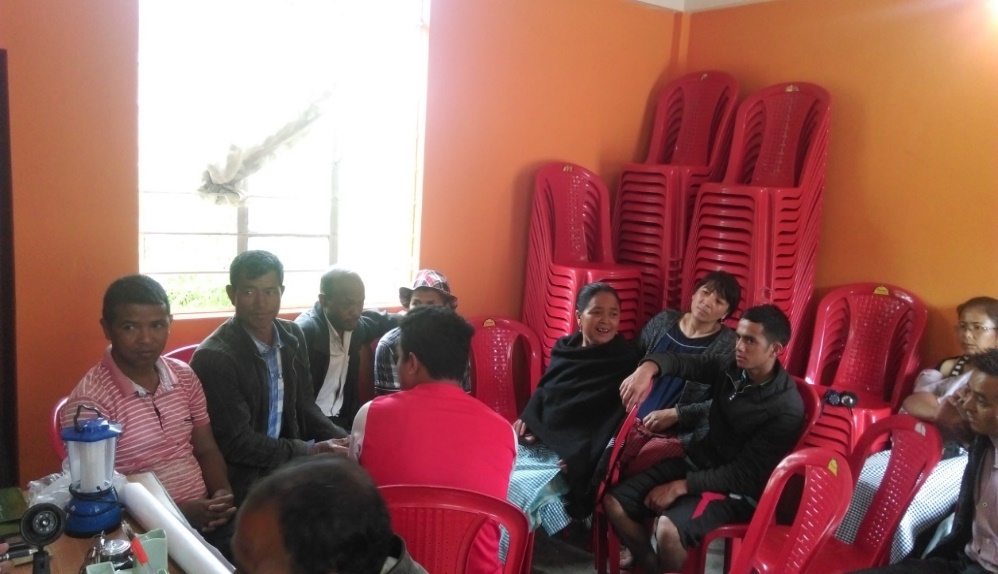
Highlights of the Meeting:
Awareness about community-Landscape Management Project.
Laying importance on the involvement of the community in making the CNRM plan and its success.
A brief awareness on cleanliness was conducted based on the findings during the ground truthing phase.
An interactive session was held to answer the doubts of the villagers regarding the project.
2.1 Signing of EOI, VGA and Green Charter:
Langtor Village signed the Expression of Interest (EOI), the Village Grant Agreement (VGA) and the Green Charter on the 29th August,2019, after a uniform agreement by the entire community that the Community-Led landscape Management Project (CLLMP) be implemented at Langtor Village.
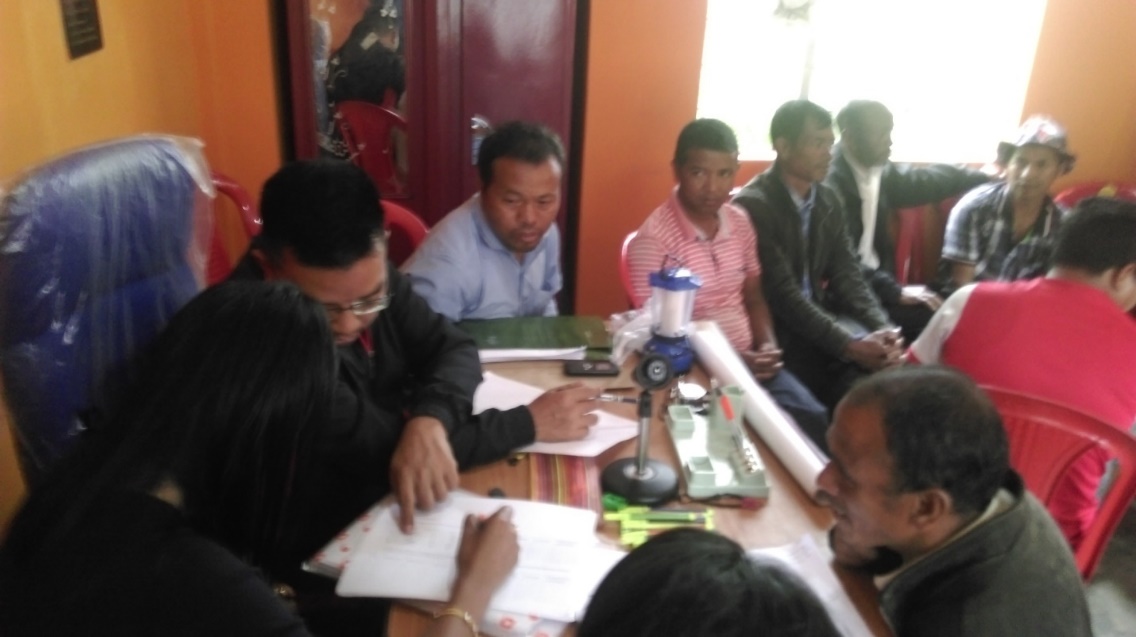
2.2. FORMATION OF VIILAGE RESOURCE MANAGEMENT COMMITTEE:
The Formation of the Village Natural Resource Management Committee was conducted in a public meeting in the presence of the entire village and the CLLMP staffs on the 29th August, 2019. The community chose the President, the Secretary, and other executive members of the Committee.
Listed below are the members of the Langtor VNRMC:
|
|||||||||
|---|---|---|---|---|---|---|---|---|---|
|
Name in Full | Designation | Gender M/F | Age (Yrs) | Education | Occupation | Community | Religion | Contact No. |
| 1 | Reliablestone Lyngdoh |
President | Male | 40 | BA | Govt. Servant | Khasi | Christian | 6033113621 |
| 2 | Gezel L. Kynshi | Secretary | Female | 35 | MA | Teacher | Khasi | Christian | 8414866061 |
| 3 | Humbustin Nongsiej | Finance Secretary | Male | 36 | BA | Teacher | Khasi | Christian | 9378174365 |
| 4 | Balianti. Kynshi |
Member | Female | 29 | BA | NA | Khasi | Christian | 8132869558 |
| 5 | Deitimon L. Kynshi | Member | Female | 42 | IX | Farmer | Khasi | Christian | 6909676025 |
| 6 | Doriya Warjri |
Member | Female | 32 | BA | Farmer | Khasi | Christian | 7085154510 |
| 7 | Komety Wahlang | Member | Female | 51 | X | Farmer | Khasi | Christian | 8131947802 |
| 8 | Shadiar Nongrum | Member | Male | 52 | X | Farmer | Khasi | Christian | 6909418059 |
| 9 | Parlakstar L. Kynshi | Member | Male | 52 | X | Farmer | Khasi | Christian | 8974394825 |
| Village Community Facilitators | ||||||
|---|---|---|---|---|---|---|
| Sl. No. | Name | Gender | Age | Education | Contact Number | Role |
| 1 | NinesixtenNongrum | Male | 43 | X | Social &KM | |
| 2 | Richestar Kurbah | Male | 26 | XII | 7629906612 | Environment &GIS |
| 3 | Nangiaisan Wahlang | Male | XII | 8131947802 | M&E Documentation | |
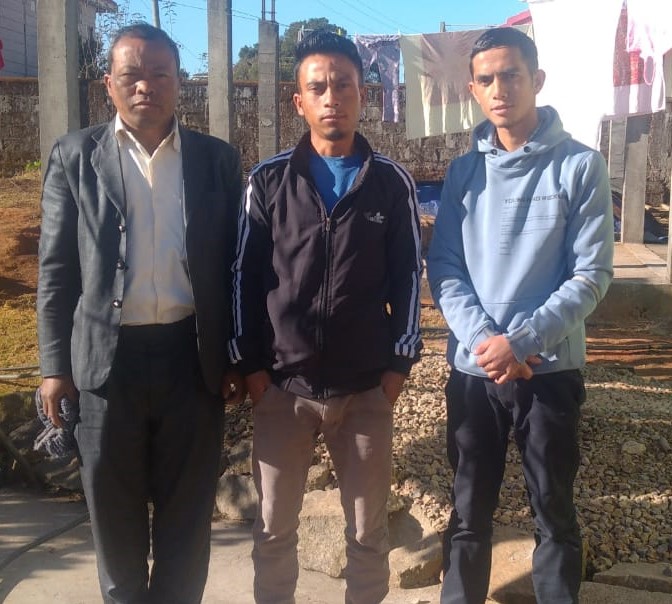
| List Of Procurement Members | ||||||
|---|---|---|---|---|---|---|
| Sl.No. | Name | Gender | Age | Education | Contact Number | Role |
| 1 | SparlusKharsyntiew | M | 30 | BSc | Purchase | |
| 2 | Fighter Diengdoh | M | 43 | VII | Purchase | |
| 3 | JunishaL.Kynshi | F | 27 | IX | Purchase | |
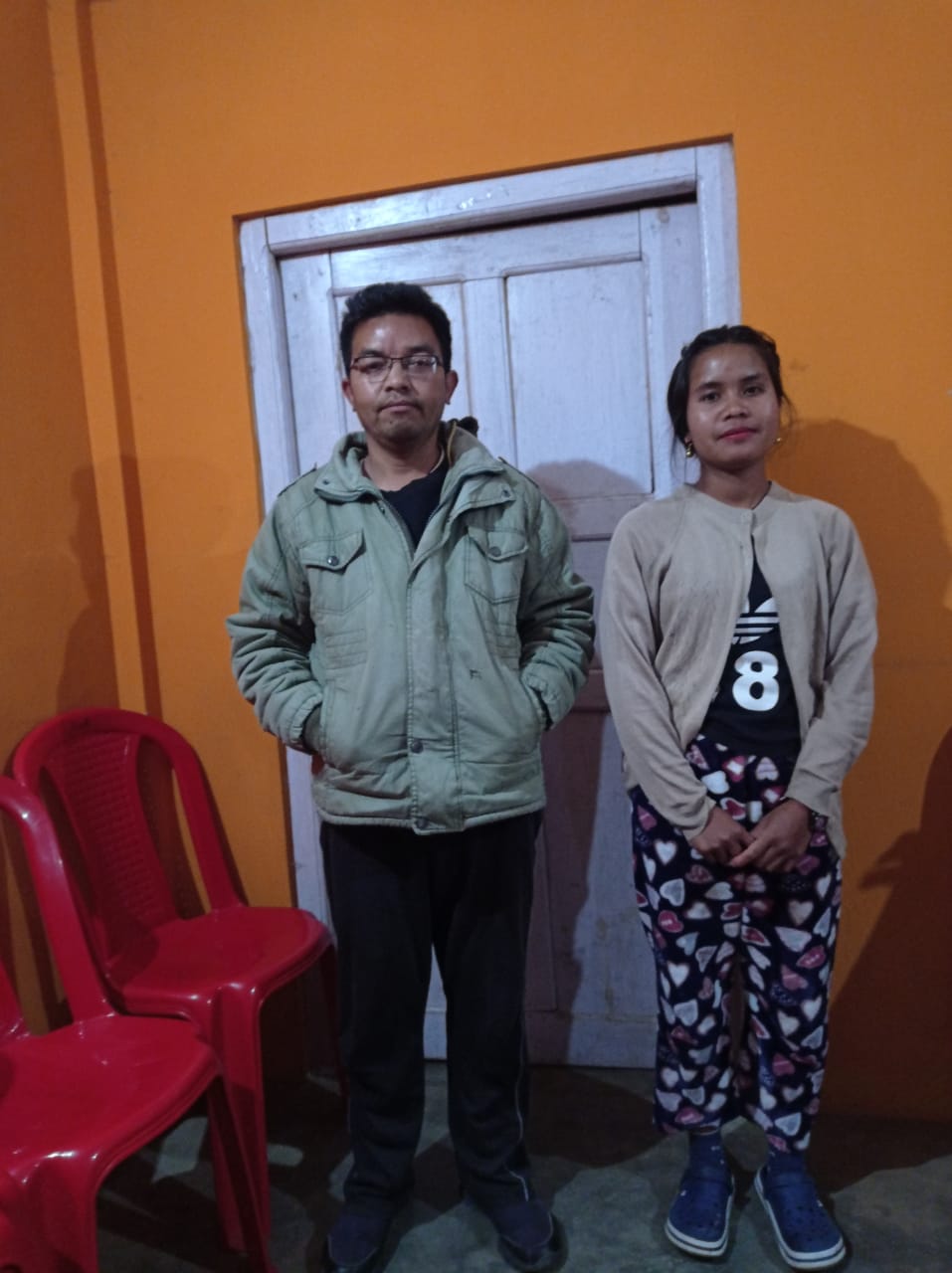
President & Secretary of Langtor
3. Opening of Bank Account:
The opening of the bank account was done after the signing of the EOI (Expression of Interest), the VGA (Village Grant Agreement) and the signing of the Green Charter at the respective villages.
A meeting was held for all the VNRMC members of Langtor to brief and assist them before opening the VRNMC bank account. The bank account was opened on 21st August, 2019.
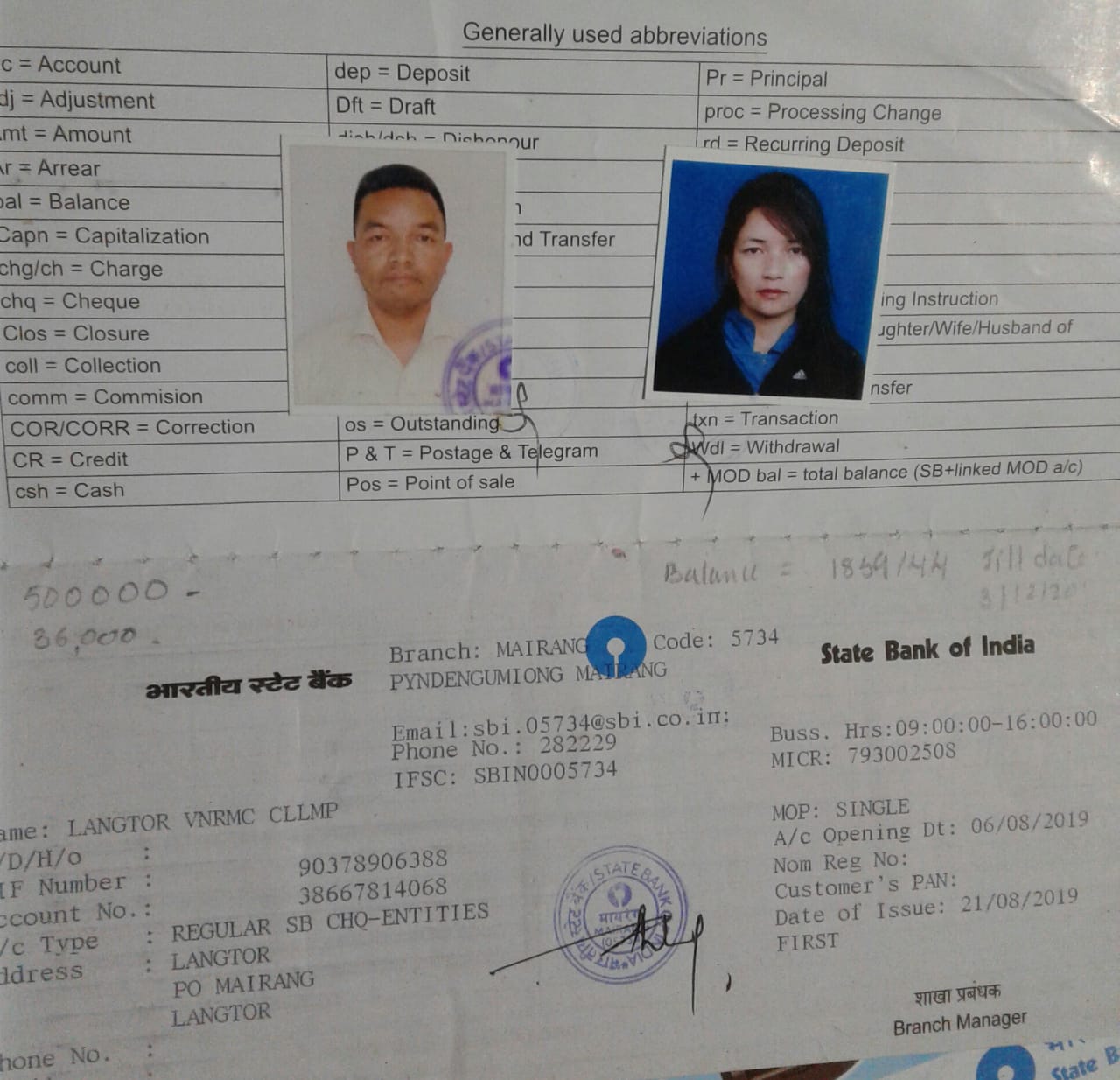
4. Participatory Rural Appraisal Exercise:
The PRA aims to incorporate the knowledge and opinions of the community in the planning and management of development projects and programs. The PRA exercise at Langtor village took place on the 28th August, 2019, where a total of 60 villagers both men and women took part in the exercise.
The initial stage of Participatory Rural Appraisal exercise at Langtor village commenced with a meeting cum orientation program on CLLMP. While conducting the meeting, the community members were made aware of the various PRA exercise conducted for the development of Community Natural Resource Management Plan (CNRMP) of the village, the community members contribution in the exercise and the objective to be achieved. The key informants- the VNMRC and the VCFs helped facilitate maximum participation.
Commencement of PRA:
Introduction:
Participatory Rural Appraisal is the process of involving local people in the analysis and interpretation of their own situation of a given rural area. The local people i.e., the participants take a leadership role in collecting, analyzing, interpreting, and presenting information and in this process impart knowledge and development insight to the specialist and extension agents for management of natural resources. Participatory Rural Appraisal is conducted to establish rapport with the village community as well as to identify and define problems for prioritization in the village itself. It is a way of learning from and with community members to investigate their need assessment, analyze and evaluate constraints and opportunities and find out priorities in the area of agriculture, small scale rural enterprises and any other social and economic development programs addressed to village development based on the principle of listening and learning.
Objectives of PRA exercise at Langtor Village:
The Participatory Rural Appraisal (PRA) exercise at Langtor was conducted with the following objectives:
To identify the natural, human, and economic resources of village.
To identify the village problems and prioritize them with the help of the community members.
To prepare the Community natural Resource Management Plan of the village.
Activity 1: Resource Mapping
Objectives of Resource Mapping
Tool to begin interaction with the people in the village.
An exercise to provide an opportunity to bring people together to understand the natural resources of the village towards plan preparation.
Local people prepared the Resource Map by drawing it on a chart paper without much interference of outsiders.
This activity achieved the following purposes:
Rapport building and won the confidence of the villagers.
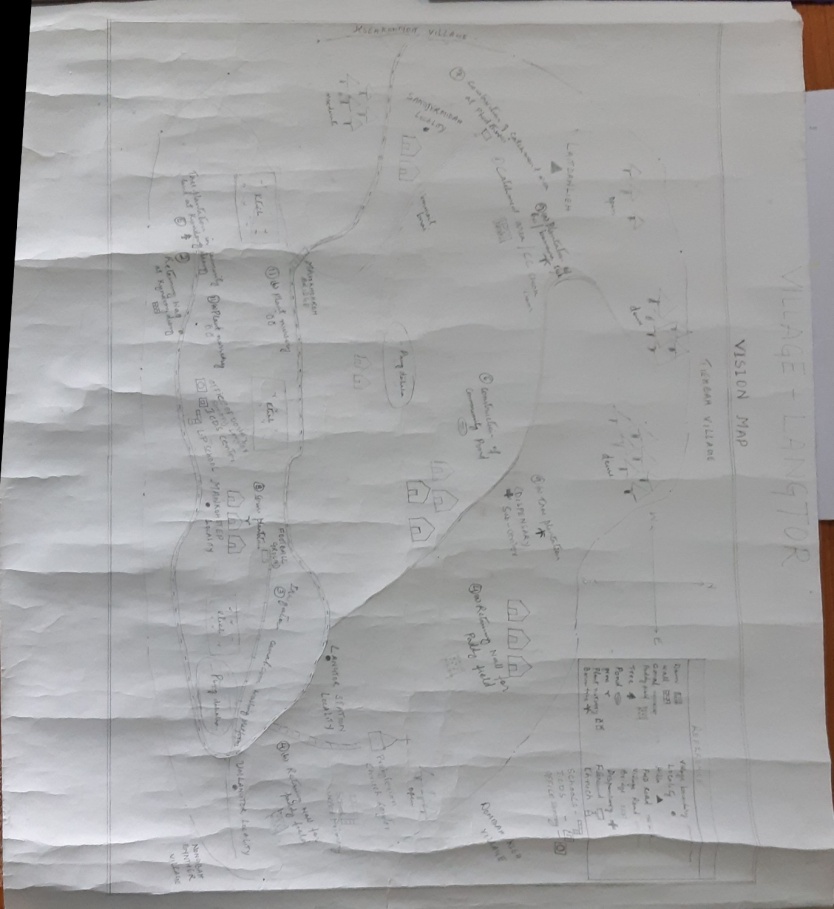 Analysed the spatial
information, particularly studied problems, and opportunities of
villagers.
Analysed the spatial
information, particularly studied problems, and opportunities of
villagers.
Got an impression about the village setting, physical layout, location of various houses and institutions.
Fig:Resource Map Of Langtor Village
Findings Based on the Resource Map of Langtor Village:
1.Main agriculture produce is rice, potato and maize.
2.The type of forest found in the village are mainly community and private lands.
3.Wahkynshi river is present and flow through the village paddy field.
4.Presence of Barren land
5.Presence of Community Hall
6.Presence of Football playground.
7.Presence of Integrated Child Development Services (ICDS)
8.Presence of dug out ponds for fisheries.
9.Habitation is not confined to one place but spread all over the village.
Activity 2: Baseline Data Survey to fill the Environment and Social Template:
During the PRA exercise, the External Expert of Social & Environment Management held group discussions with different groups to gather basic village information regarding number of households, demographic information, major crops, and enterprises taken in the village, trends of production and productivity of major crops in the village and demographic distribution of village population. Information related to land use category such as forest, cultivable land, water bodies, etc. and problems and challenges related to NRM were discussed.
Activity 3: Focussed Group Discussion on Problem Analysis:
A. Do people have sufficient access to supply of fodder, fuel wood, leaf litter?
No, the people in the village do not have sufficient access to supply of fodder, fuel wood, leaf litter. They get it from the community forest and from their own private lands/forest.
B. Has access to timber improved or reduced over the years? How is access for household use and commercial use managed?
Access to Timber has reduced over the years. People in the village get it only from private land which is not enough. They must purchase it when needed.
C. Are the water bodies facing any threats?
Yes, the water bodies are facing threats due to burning of trees for charcoal and deforestation.
D. Do all people in the village have access to drinking water? What are the challenges?
Yes, there is sufficient availability of drinking water.
They face water scarcity during winter only.
E. Are there any degraded areas in the village (open/ degraded forests, mining affected, high soil erosion etc.)?
There are some minor degradations in cultivated land and open forest.
F. What has caused this degradation? Are there practices causing threats to availability and access to natural resources?
Fertility of the soil decline over the years.
Excessive practice of Jhum Cultivation.
Deforestation.
Forest Fires.
G. What have been the changes in agricultural practices?
Since urea was introduced, there has been a decrease in productivity.
H. Are there any challenges in farming?
The main challenge in farming is lack of water availability, use of chemical fertilizer and pests.
I. How would you consider the health situation in your village?
Good.
J. How is the situation of cleanliness, sanitation, access to toilets and waste management?
Improved. All house has toilets and waste management has been improved.
K. Who are the most vulnerable in the village? What can be done to improve their lives?
Poor people.
L. What are the livelihood aspirations of the youth? Are there any avenues available?
None, except daily wages.
M. Do any committees/ institutions/ rules exist to manage and monitor natural resources in the village?
The VNRMC under the CLLMP is the main committee that is now in place to manage the natural resources in the village.
Village Dorbar.
N. What are some of the major issues of conflict in the village?
Nothing related to NRM.
O. Have any of the above issues been discussed in village meetings?
Yes.
P. How do people resolve disagreements and conflicts?
All disagreements and conflicts are addressed by the traditional institution of village called the Village Dorbar.
Activity 4: Seasonality Calendar:
The CLLMP team also mapped the seasonal calendar of Langtor Village to help identify heavy workload periods, periods of relative ease, credit crunch, diseases, food security, wage availability etc. This will prove helpful in project planning and project timeline framing.
Participants:
Shri. Reliablestone Lyngdoh- Headman of Langtor Village and President of VNRMC.
Smt. Gezel L. Kynshi- Secretary of the VNRMC.
Shri. Humbustin Nongsiej- Member of the VNRMC.
Smt. Balianti L. Kynshi- Member of the VNRMC.
Smt. Deitimon L. Kynshi- Member of the VNRMC.
| SEASONAL CALENDAR | |||||||||||||
|---|---|---|---|---|---|---|---|---|---|---|---|---|---|
| Sl. No. | Criteria | Jan | Feb | Mar | Apr | May | Jun | Jul | Aug | Sep | Oct | Nov | Dec |
| 1. | Water Scarcity | 3 | 2 | 1 | 1 | 1 | |||||||
| 2. | Prone to sickness | 2 | 2 | 2 | |||||||||
| 3. | Seeking job outside | ||||||||||||
| 4. | Rain Fall | 1 | 1 | 2 | 2 | 2 | 3 | ||||||
| 5. | Free – Less work | 1 | 2 | 3 | |||||||||
| 6. | Paddy Cultivation | 2 | 1 | 1 | |||||||||
| 7. | Paddy harvesting | 1 | 1 | ||||||||||
| 11. | Vegetable (crop cultivation) | 2 | 1 | 1 | 2 | 2 | 2 | 2 | |||||
| 12. | Vegetable (crop harvesting) | 1 | 1 | 1 | 2 | 2 | 2 | 2 | |||||
| 13. | Festive Season | 1 | 2 | 1 | |||||||||
| 14. | Forest fire | 1 | 2 | 2 | |||||||||
| 15. | Collection of Fuel wood | 2 | 2 | 1 | |||||||||
| Maximum | 1 |
|---|---|
| Moderate | 2 |
| Less | 3 |
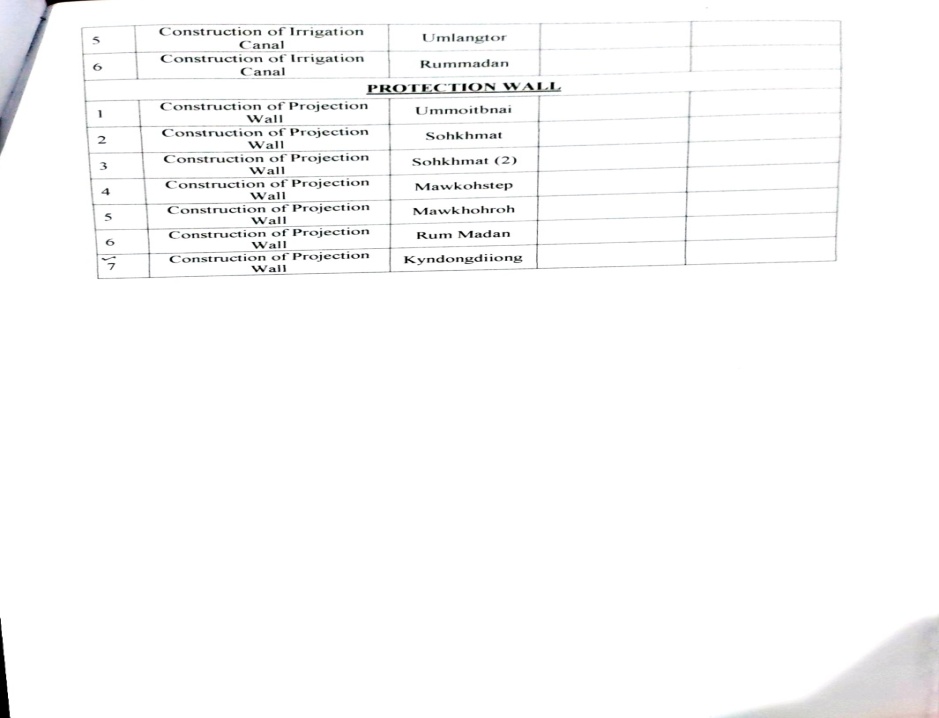
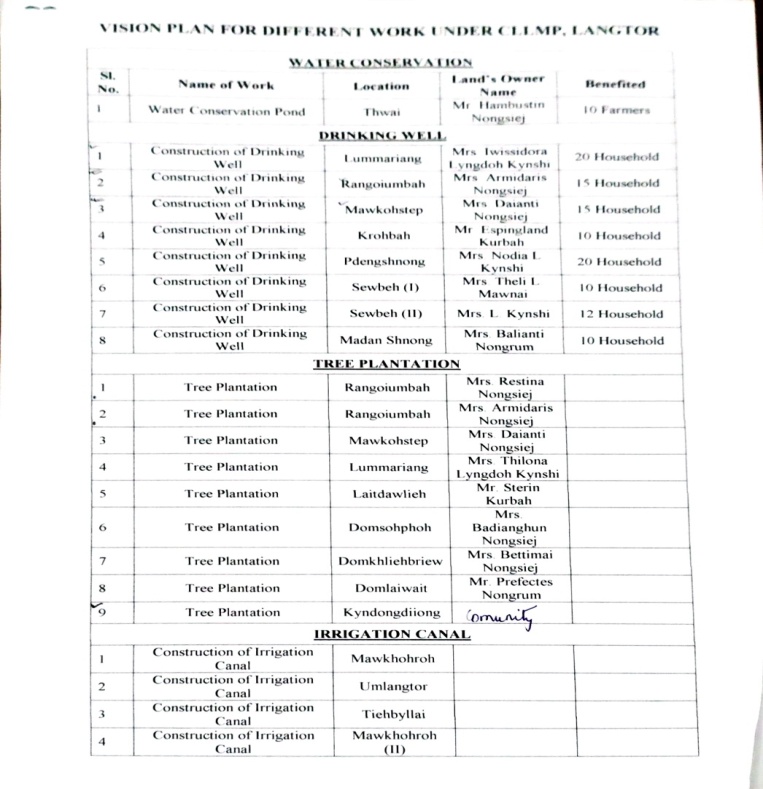 Submission
of the CNRMP:
Submission
of the CNRMP:
5.1. Final CNRMP:
| Sl No. | Name of Proposed Interventions | Site | Land ownership | Nos of HHs expected to Benefit | Priority (High/ Medium/ Low) | ||
|---|---|---|---|---|---|---|---|
| BPL | APL | TOTAL | |||||
| 1. | Water Conservation Pond | Thwai | Private | 10 | 10 | High | |
| 2. | Construction of Drinking Well | Lummariang | Private | 20 | 20 | High | |
| 3. | Construction of Drinking Well | Rangoiumbah | Private | 15 | 15 | High | |
| 4. | Construction of Drinking Well | Mawkohstep | Private | 15 | 15 | High | |
| 5. | Construction of Drinking Well | Krohbah | Private | 10 | 10 | High | |
| 6. | Constrction of Drinking Well | Pdengshnong | Private | 20 | 20 | High | |
| 7. | Construction of drinking Well | Sewbeh | Private | 10 | 10 | High | |
| 8. | Construction of Drinking Well | Sewbeh | Private | 12 | 12 | High | |
| 9. | Construction of Drinking Well | Madan Shnong | Private | 10 | 10 | High | |
| 10. | Tree Plantation | Rangoiumbah | Private | High | |||
| 11. | Tree Plantation | Rangoiumbah | Private | High | |||
| 12. | Tree Plantation | Mawkohstep | Private | High | |||
| 13. | Tree Plantation | Lummariang | Private | High | |||
| 14. | Tree Plantation | Laitdawlieh | Private | ||||
| 15. | Tree Plantation | Domsohphoh | Private | High | |||
| 16. | Tree Plantation | Domkhliehbriew | Private | High | |||
| 17. | Tree Plantation | Domlaiwait | Private | High | |||
| 18. | Tree Plantation | Kyndongdiiong | Community | High | |||
| 19. | Construction of Irrigation Canal | Mawkhohroh | Private | High | |||
| 20. | Construction of Irrigation Canal | Umlangtor | Private | High | |||
| 21. | Construction of Protection Wall | Ummoitbnai | Private | High | |||
| 22. | Construction of Protection Wall | Sohkhmat | Private | High | |||
| 23. | Construction of Protection Wall | Sohkhmat | Private | High | |||
| 24. | Construction of Protection Wall | Mawkohstep | Private | High | |||
| 25. | Construction of Protection Wall | Mawkhohroh | Private | High | |||
| 26. | Construction of Protection Wall | Rum Madan | Private | High | |||
| 27. | Construction of Protection Wall | Kyndongdiiong | Private | High | |||
7. GIS Activities
| Sl. No. | Parameters | Village Information |
|---|---|---|
| 1. | GPS Coordinates: | |
| i. | Latitude | 25.537381° |
| ii. | Longitude | 91.590061° |
| iii. | Elevation Reading (MSL) | 1723m |
| 2. | Village Geographical Area (Ha) | Total 249.72 ha 2.4972 sq km |
| i. | Total Forest Area (including community, Clan, Pvt Forest) | 137.65 ha |
| ii. | Total Area of Water Bodies | 3.71 ha |
| iii. | Total Area under Agri-Horticulture | |
| iv. | Total Degraded land area (Ha) | 3.11ha |
| 3. | Average Annual Rainfall | 1200 -3000 mm |
| 4. | Soil Type | coarse loamy soils |
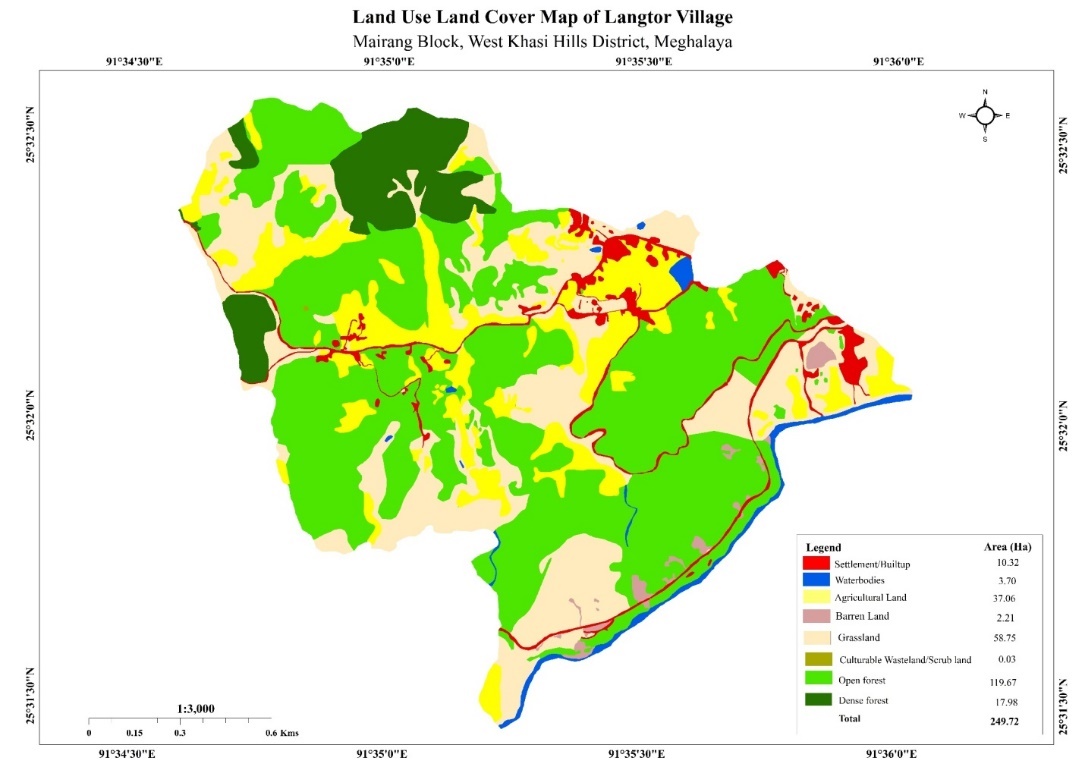
7. PROJECTIMPLEMENTATION:
| 1. | Type of Intervention | Site Name | GPS Co-ordinates | Amount Sanctioned | Work Status | |
|---|---|---|---|---|---|---|
| Afforestation | Diengiong | 25o32’10.811”N | 91035’10.053”E | 59,750 | Completed | |
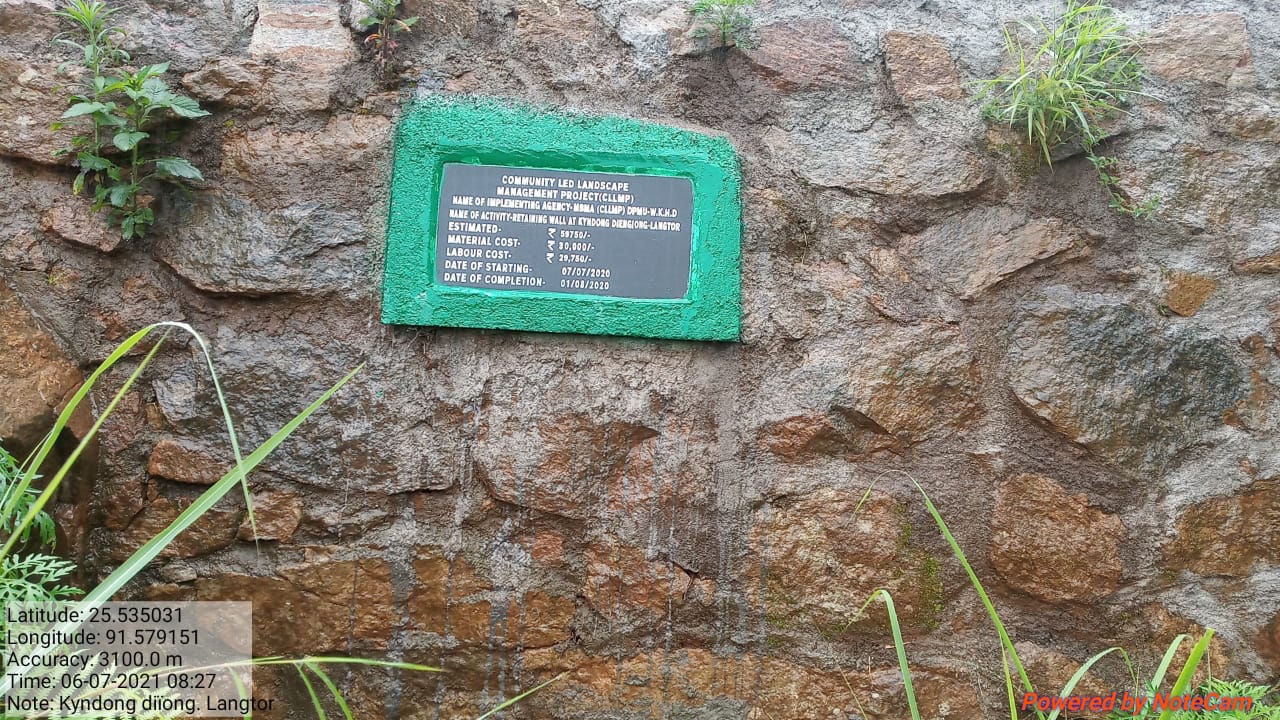
| 2. | Type of Intervention | Site Name | GPS Co-ordinates | Amount Sanctioned | Work Status | |
|---|---|---|---|---|---|---|
| Erosion Control Wall | Kyndong-Di-Iong | 82,730 | Completed | |||
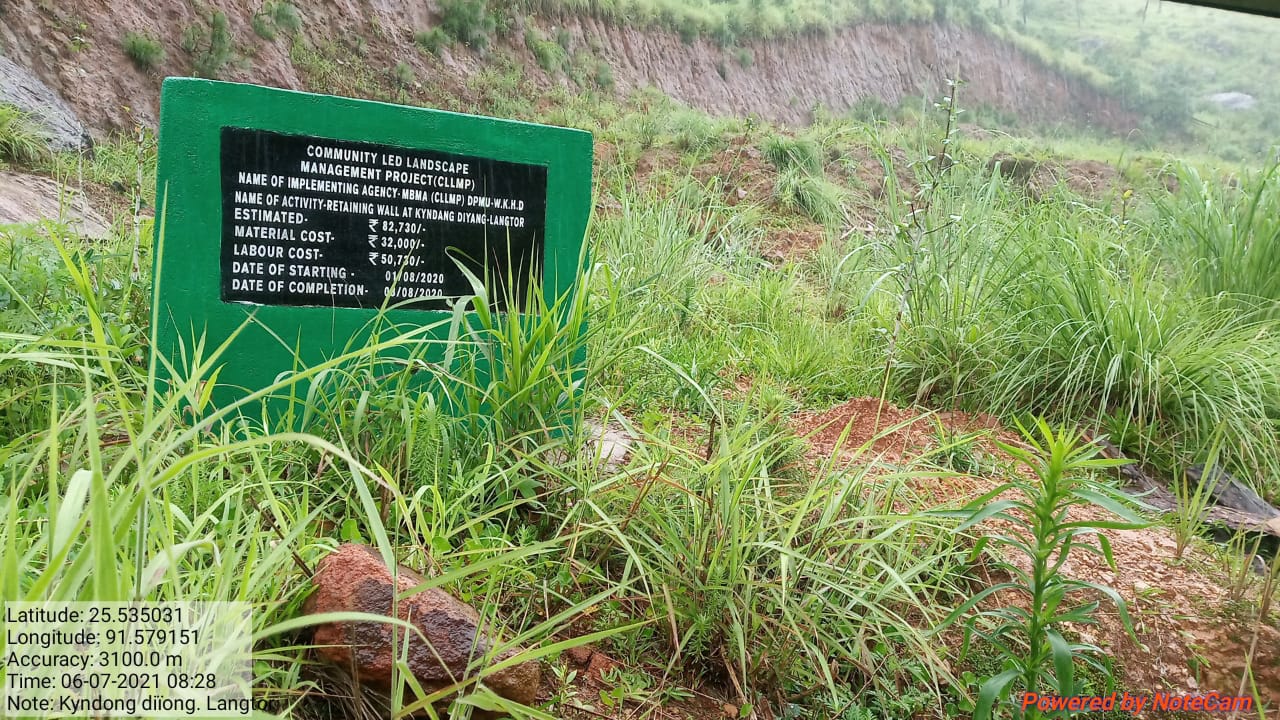
| 3. | Type of intervention | Site Name | GPS Co-ordinates | Amount Sanctioned | Work Status | |
|---|---|---|---|---|---|---|
| Spring Chamber and Treatment of Catchment Area | Lummariang | 25031’18.937”N | 91035’19.941”E | 86,950 | Completed | |
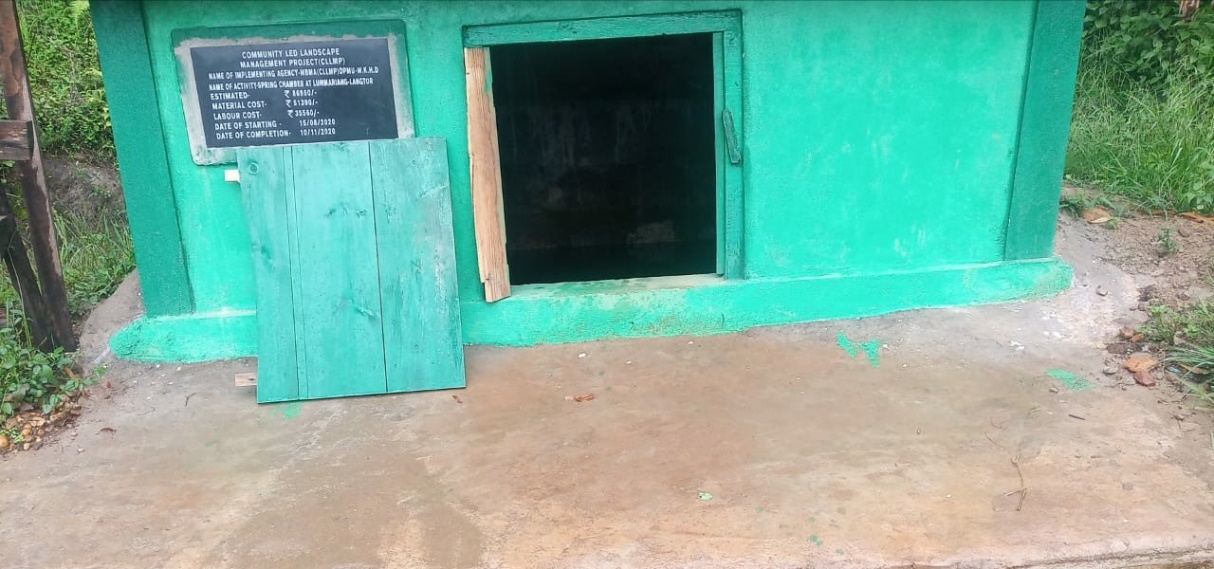
| 4. | Type of Intervention | Site Name | GPS Coordinates | Amount Sanctioned | Work Status | |
|---|---|---|---|---|---|---|
| Spring Chamber | Krohbah | 25032’11.989”N | 91035’3211.989”N | 85,600 | Completed | |
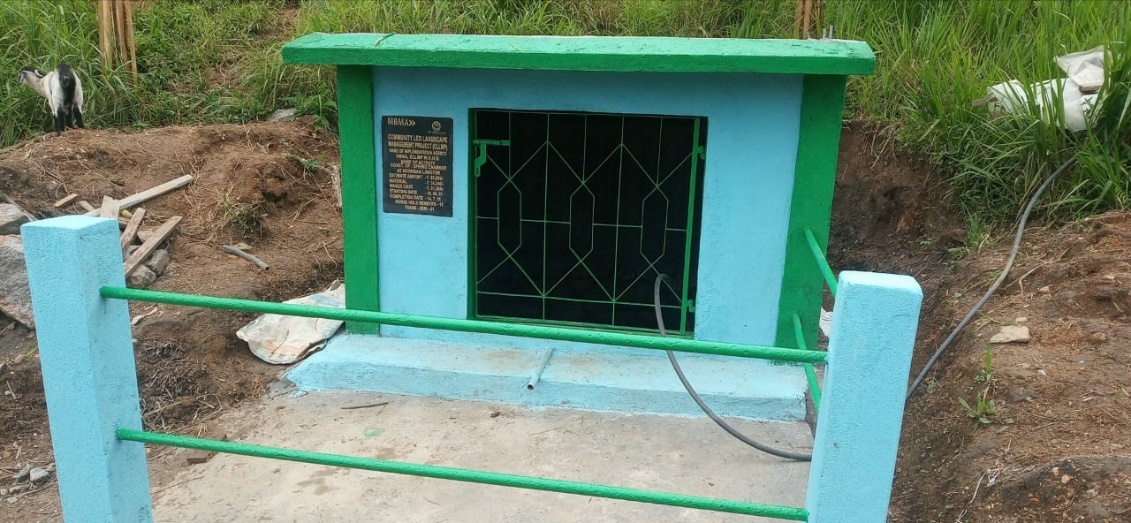
| 5. | Type Of Intervention | Site Name | GPS Co-ordinates | Amount Sanctioned | Work Status | |
|---|---|---|---|---|---|---|
| Spring Chamber | Rangoiumbah | 25032’08.757”N | 91035’29.076”E | 85,600 | Completed | |
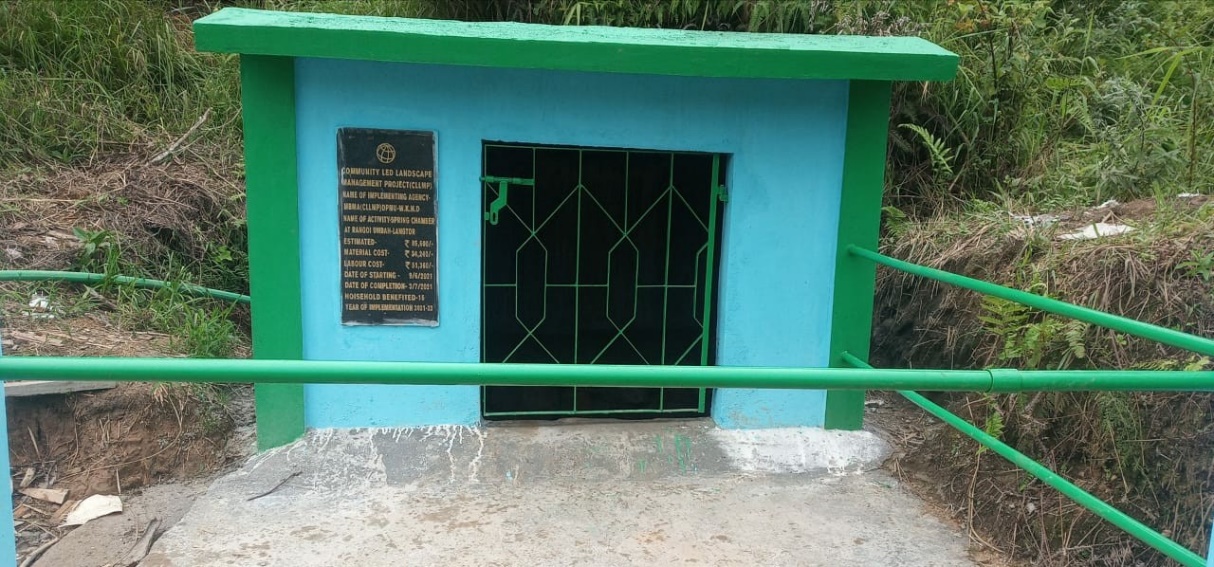
| 6. | Type of Intervention | Site Name | GPS Coordinates | Amount Sanctioned | Work Status | |
|---|---|---|---|---|---|---|
| Spring Chamber | Synjermidah | 25032’06.538”N | 91034’53.301’E | 85,600 | Completed | |
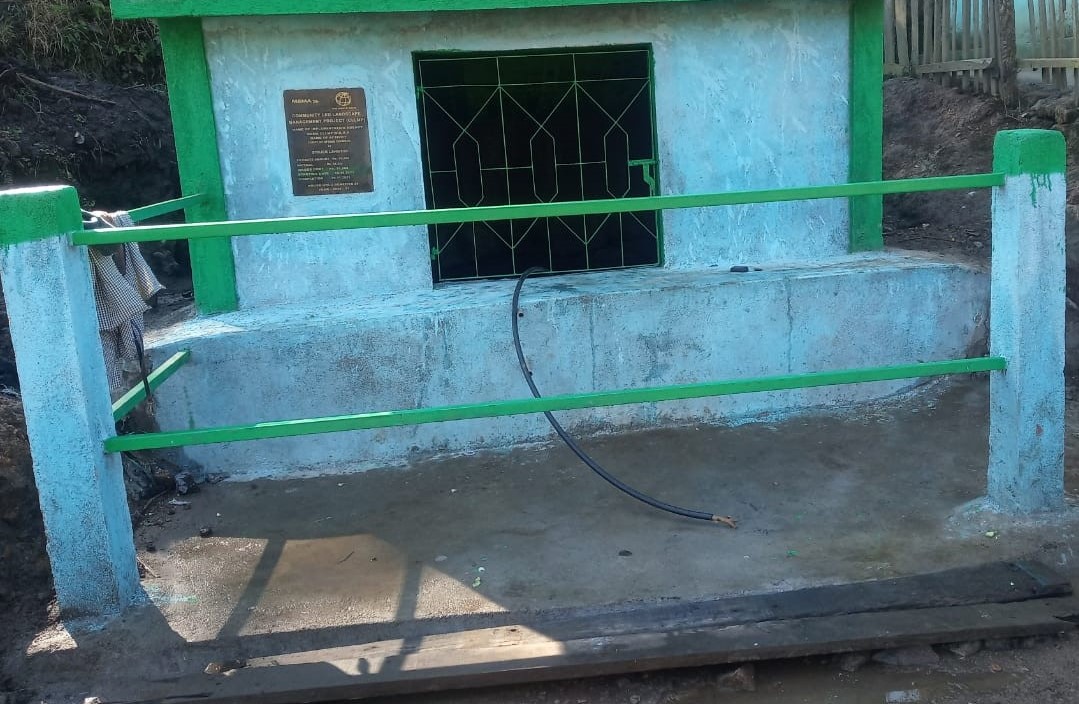
| 7. | Type Of Intervention | Site Name | GPS Co-ordinates | Amount Sanctioned | Work Status | |
|---|---|---|---|---|---|---|
| Afforestation along with Staggered Trenches | Rangoi | 25032’10.321”N | 91035’30.720” E |
2,29,600 | Completed | |
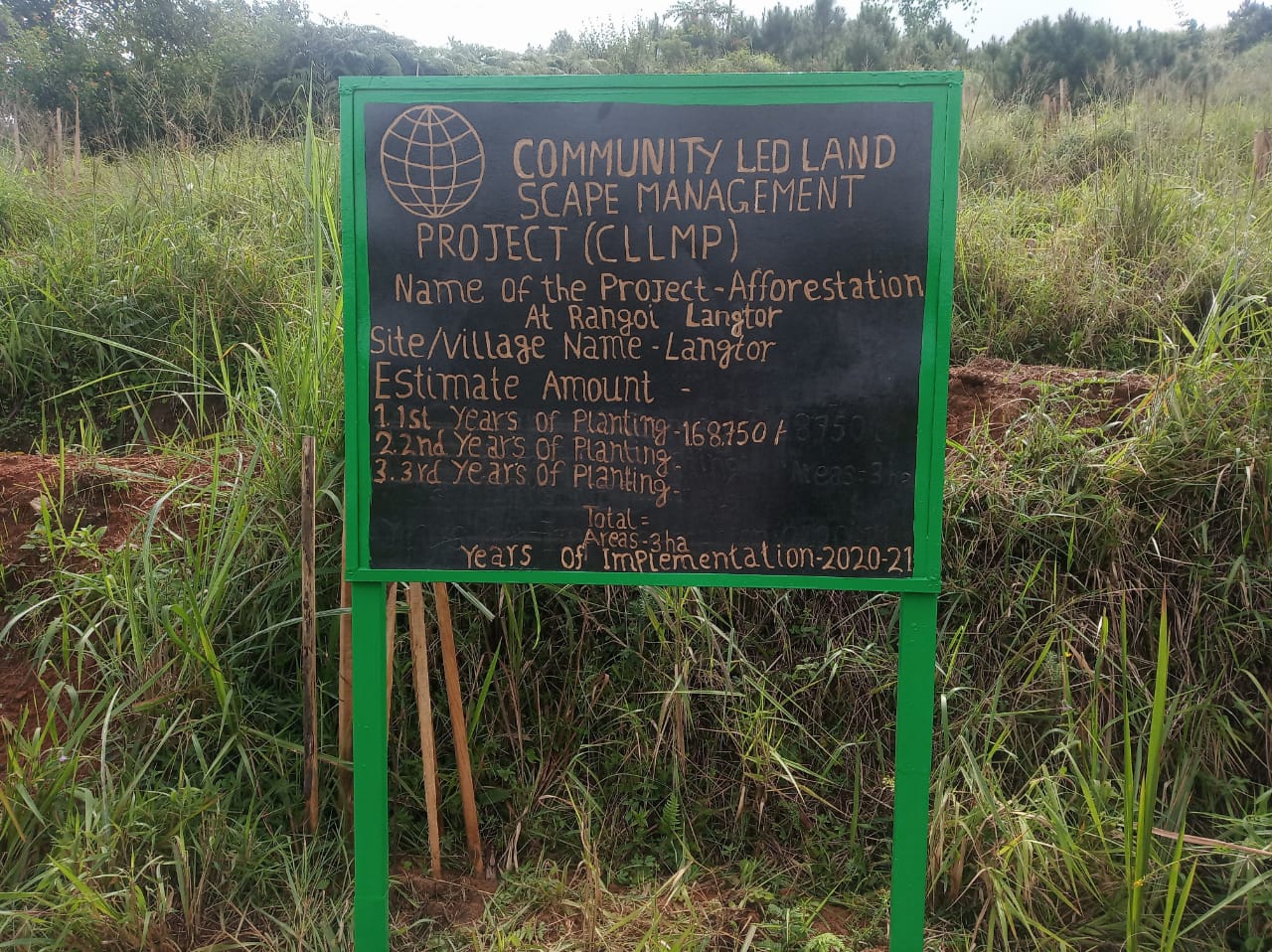
| 8. | Type Of Intervention | Site Name | GPS Co-ordinates | Amount Sanctioned | Work Status | |
|---|---|---|---|---|---|---|
| Irrigation Canal With Protection Wall | Rum Madan | 25032’16.462”N | 91035’27.696”E | 5,50,000 | Completed | |
| 9. | Type Of Intervention | Site Name | GPS Co-ordinates | Amount Sanctioned | Work Status | |
|---|---|---|---|---|---|---|
| Stone Masonry Retaining Wall | Mawkhohroh | 25032’11.559”N | 91035’12.385”E | 4,52,000 | Completed | |
8. Fund Status:
| Fund Released to VNRMC (Project Implementation) | Total No. of Work Order issued | Total amount issued under CLLMP (Per Activity) | Total Amount Spent | Start Date | End Date |
|---|---|---|---|---|---|
| ₹ 26,13,050 | 16 | Afforestation | 56,750 | 10-Jul-20 | 18-Jul-20 |
| Erosion Control Wall | 82,730 | 30-Jul-20 | 01-Aug-20 | ||
| Spring Chamber with TCA (Spring Chamber) |
80,080 | 30-Jul-20 | 12-Oct-20 | ||
| Spring Chamber with TCA (Afforestation) |
6,870 | 30-Jul-20 | 12-Oct-20 | ||
| SC (Spring Chamber) | 85,600 | 09-Jun-21 | 03-Jul-21 | ||
| SC (Spring Chamber) | 85,600 | 10-Jun-21 | 13-Jul-21 | ||
| Afforestation with Staggered trenches (Afforestation) | 1,76,826 | 15-Jul-21 | 26-Jul-21 | ||
| Afforestation with Staggered trenches (Trenches) | 13,824 | 15-Jul-21 | 26-Jul-21 | ||
| Spring Chamber | 34,072 | 12-Oct-21 | 30-Nov-21 | ||
| Irrigation Canal | 5,50,000 | 04-Jan-22 | 28-Mar-22 | ||
| Stone Masonry Retaining Wall | 4,52,000 | 01-Dec-21 | 12-Feb-22 | ||
| Erosion Control Retaining Wall | 94,600 | 22-Nov-22 | 13-Dec-22 | ||
| RCC Check Dam | 1,79,600 | 15-Nov-22 | 09-Dec-22 | ||
| Nursery | 1,82,250 | 18-Jul-22 | 12-Aug-22 | ||
| RCC Check Dam | 2,18,148 | 21-Nov-22 | 12-Dec-22 | ||
| RCC Check Dam | 3,14,100 | 18-Nov-22 | 13-Dec-22 | ||
| TOTAL AMOUNT SPENT | ₹ 26,13,050 | ||||